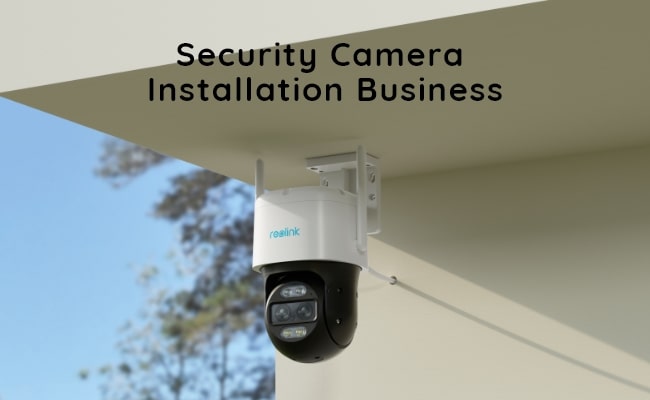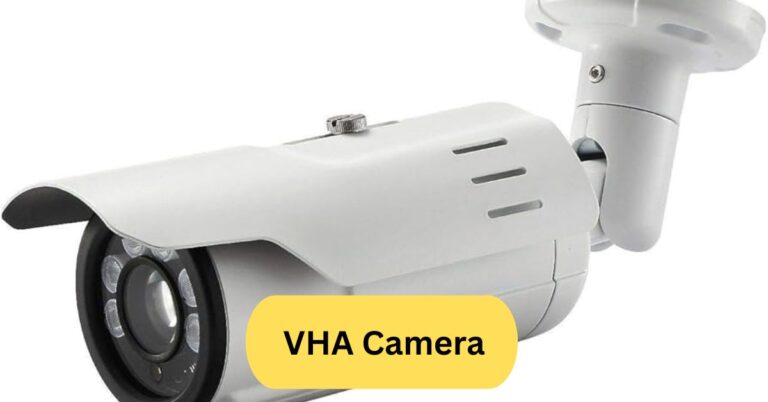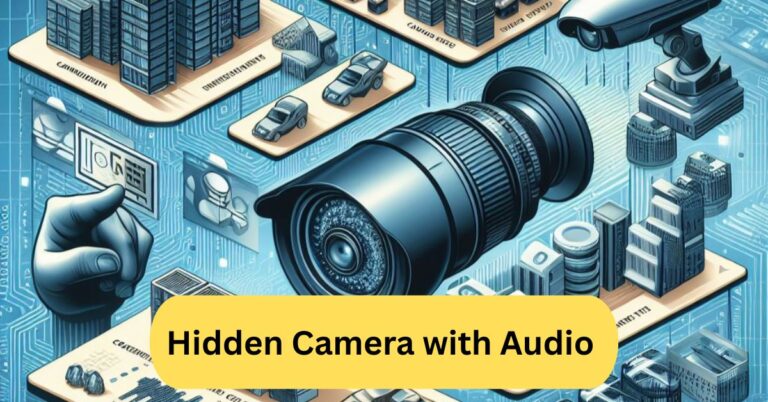
I’ve used a solar security camera for my backyard, and it’s been incredibly convenient—no wiring hassles, and it runs smoothly even after cloudy days. The motion alerts and clear night vision give me peace of mind without extra electricity costs.
A solar security camera uses sunlight to power itself, eliminating the need for wiring or frequent battery changes. It’s ideal for outdoor surveillance in remote areas, offering eco-friendly operation and continuous monitoring even during power outages.
In this article we discuss about “Solar Security Camera”
Table of Contents
Solar Security Camera, The Future of Sustainable Surveillance:

1. Introduction to Solar Security Cameras:
In a world where security is becoming a top priority for homes, businesses, and public areas, solar security cameras have emerged as a game-changer. These cameras run on clean, renewable energy from the sun, making them not only eco-friendly but also cost-efficient.
2. Why Solar-Powered Security Is Gaining Popularity:
The push for greener technologies, combined with the need for flexible, wireless surveillance, has fueled the popularity of solar security cameras. They allow users to monitor areas without worrying about power availability or high electricity bills.
3. A Quick Overview of How They Work:
At their core, solar security cameras use solar panels to convert sunlight into electricity, which is stored in rechargeable batteries.Even on overcast days or at night, the camera will continue to function thanks to the saved battery.
Benefits of Solar Security Cameras:
1. Environmentally Friendly Solution:
These cámaras, al utilizar energía solar renovable, disminuyen considerablemente las emisións de carbono en comparación con los sistemas de electricidad de línea.
2. Cost Savings Over Time:
While the upfront cost might be higher, solar security cameras save you money in the long run by eliminating electricity expenses and reducing wiring installation costs.
3. No Power Outage Concerns:
In contrast to previous hybrid systems, solar cameras maintain uninterrupted security by operating even in the presence of interrupters.
4. Easy Installation in Remote Locations:
They’re perfect for off-grid areas—like farms, construction sites, or cabins—where running electrical cables would be difficult or costly.
How Solar Security Cameras Work:
1. Solar Panel Functionality:
Solar panels absorb sunlight and convert it into electrical energy, which powers the camera directly or charges its battery.
2. Battery Storage System:
High-capacity lithium-ion or lithium-polymer batteries store power for nighttime or low-sunlight operation.
3. Wireless Connectivity and Data Transfer:
Most solar cameras connect via Wi-Fi or 4G/LTE networks, sending real-time video to your smartphone or cloud storage.
Types of Solar Security Cameras:
1. Fixed Solar Security Cameras:
These have a stationary view and are best for monitoring a specific area like an entrance or driveway.
2. PTZ (Pan-Tilt-Zoom) Solar Cameras:
They permiten el control remoto de pan, tilt, y zoom, abarcando áreas de vigilancia más amplias.
3. 4G/LTE Solar Security Cameras:
Perfect for areas without Wi-Fi, these cameras use mobile networks to stream footage.
Key Features to Look For:
1. High-Resolution Imaging:
Busca cámaras con resolución de al menos 1080p para obtener vídeos con excelente nitidez y claridad.
2. Night Vision Capabilities:
Infrared LEDs or starlight sensors enable clear images even in complete darkness.
3. Motion Detection and Alerts:
Smart motion sensors pueden alertar inmediatamente a través de aplicaciones de alertas cuando se detecta movimiento.
4. Cloud and Local Storage Options:
Many cameras offer both SD card recording and cloud storage for flexible video access.
5. Weatherproof and Durable Design:
Check for an IP65 or higher waterproof rating to ensure durability in harsh conditions.
Installation Guide:

1. Choosing the Right Location:
Install the camera where you can get maximum sunlight and cover the most important areas.
2. Optimal Solar Panel Positioning:
Tilt the panel in the direction of the sun, which is normally south-facing in the Northern Hemisphere, for best results.
3. Setting Up Wireless Connections:
Ensure your Wi-Fi signal or 4G/LTE coverage is strong enough for smooth video streaming.
Solar Security Cameras vs. Traditional Security Systems:
1. Power Dependency:
Traditional systems depend on grid electricity, unlike solar cameras that operate independently.
2. Maintenance Needs:
Both require occasional cleaning and updates, but solar cameras often have fewer cable issues.
3. Cost Comparison:
Initial costs may be similar, but long-term expenses are lower with solar setups due to zero electricity usage.
Common Concerns and Solutions:
1. Performance During Cloudy Days:
High-capacity batteries and efficient solar panels ensure continued operation during low sunlight.
2. Battery Lifespan and Replacement:
Most batteries last 2–5 years, and replacements are easy to install.
3. Internet Connectivity in Remote Areas:
Opt for a 4G/LTE solar camera if Wi-Fi isn’t available.
Top Brands and Models in 2025:
1. Reolink Go Plus:
A top choice with 4G connectivity, 2K resolution, and smart motion detection.
2. Arlo Go 2:
Offers high-definition video, two-way audio, and weatherproof durability.
3. Ring Solar Stick-Up Cam:
seamlessly integrates with Ring security systems and Alexa devices.
Best Use Cases for Solar Security Cameras:
1. Farms and Agricultural Sites:
Monitor livestock, crops, and property boundaries without laying power lines.
2. Construction Sites:
Keeps track of equipment, workers, and safety compliance.
3. Vacation Homes:
Maintain remote surveillance without paying utility bills.
4. Public Parks and Wildlife Monitoring:
A non-invasive way to monitor animal activity and ensure public safety.
Maintenance and Care Tips:
1. Cleaning Solar Panels Regularly:
Dust and debris reduce efficiency—clean panels monthly for best performance.
2. Checking Battery Health:
Test battery performance periodically to avoid downtime.
3. Updating Firmware:
Keep your camera’s software updated for security and performance improvements.
The Future of Solar-Powered Security:
1. AI Integration:
Expecta una detección de movimiento más inteligente que diferencia entre humanos, animales y vehículos.
2. Advanced Energy Storage:
Future batteries will store more energy for longer operation during cloudy weather.
3. Smart Home Integration:
seamless interaction with smart assistants like Alexa, Google Home, and Apple HomeKit.
Cost of Solar Security Cameras:
1. Initial Investment vs. Long-Term Savings:
Basic models start at around $100, while high-end options can exceed $400—but savings on electricity and installation make them cost-effective over time.
2. Subscription and Storage Fees:
Some models require a small monthly fee for cloud storage, while others offer free local storage.
Pros and Cons Summary Table:
| Pros | Cons |
| Eco-friendly | Higher upfront cost |
| No power bills | Limited performance in extremely cloudy conditions |
| Easy installation | Battery replacement after a few years |
| Works during outages | Dependent on the weather |
| Ideal for remote areas | Some require subscription fees |
Solar Security Cameras:
Solar security cameras are outdoor surveillance devices powered by solar panels, making them eco-friendly and low-maintenance. They work without direct electrical wiring, often with rechargeable batteries for continuous operation, even at night or on cloudy days.
Security Camera With Solar:
A security camera with solar uses a built-in solar panel to recharge its batteries, offering continuous, eco-friendly operation without frequent charging or wiring. It’s ideal for remote or outdoor areas where electricity access is limited
HD Solar WIFI/4G Security Camera 1080P:
The HD Solar WIFI/4G Security Camera 1080P delivers clear full-HD video and runs on solar power, making it energy-efficient and low-maintenance.

With Wi-Fi or 4G connectivity, it works seamlessly in remote areas without wired internet.
Best Outdoor Wireless Security Camera System, Solar Powered:
The best outdoor wireless security camera system, solar powered, offers wire-free installation, continuous solar charging, and reliable performance in all weather. It’s perfect for 24/7 surveillance in areas without direct power access.
Frequently Asked Questions:
1. Are solar-powered security cameras any good?
Yes, they’re reliable, eco-friendly, and great for areas without power access, though performance depends on sunlight availability.
2. What is the best solar security camera system?
Models like Reolink Argus 3 Pro and Arlo Pro 4 are popular for clear video, long battery life, and smart features.
3. Do you need Wi-Fi for solar cameras?
Most need Wi-Fi for live viewing and alerts, but some work with local storage or 4G LTE.
4. How long do solar cameras last?
A good solar camera can last 3–5 years or more with proper maintenance.
5. What are the disadvantages of solar cameras?
They rely on sunlight, may have reduced performance in shaded areas, and sometimes cost more upfront.
6. Do solar security cameras work at night?
Yes, they use built-in batteries and infrared night vision to record after dark.
7. What is the best security camera without a subscription?
EufyCam 2 Pro and Reolink models offer local storage with no monthly fees.
8. Do solar cameras require batteries?
Yes, they store energy in rechargeable batteries to work at night and during cloudy days.
9. What outdoor security cameras are the best?
Top options include Arlo, Reolink, and Eufy for durability, clear footage, and smart features.
10. Which is the No. 1 security camera brand?
Arlo is widely regarded as a leading brand for innovative, high-quality security cameras.
Conclusion:
A solar security camera is a wireless surveillance solution powered by sunlight, storing energy in rechargeable batteries for day and night use. It’s eco-friendly, cost-effective, and works even in remote areas without power. With features like HD video, night vision, motion alerts, and a weatherproof design, it offers reliable 24/7 monitoring. Popular brands in 2025 include Reolink, Arlo, and Ring, known for durability and smart connectivity.




